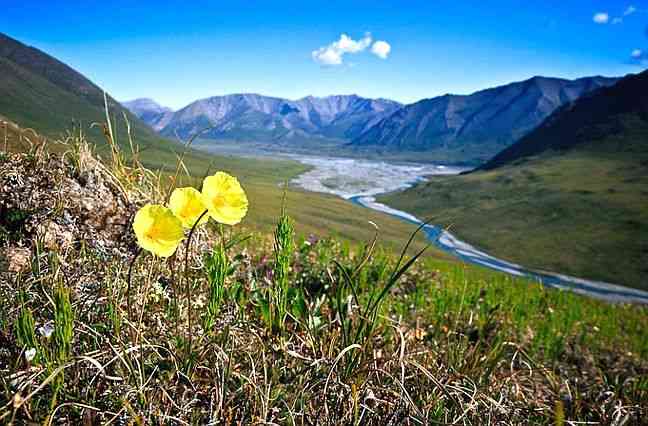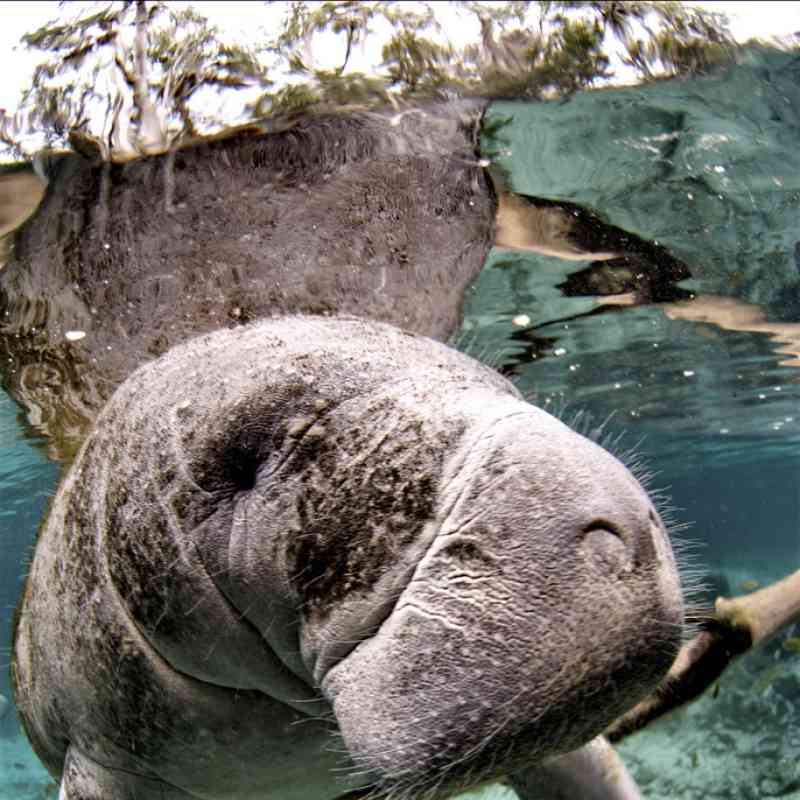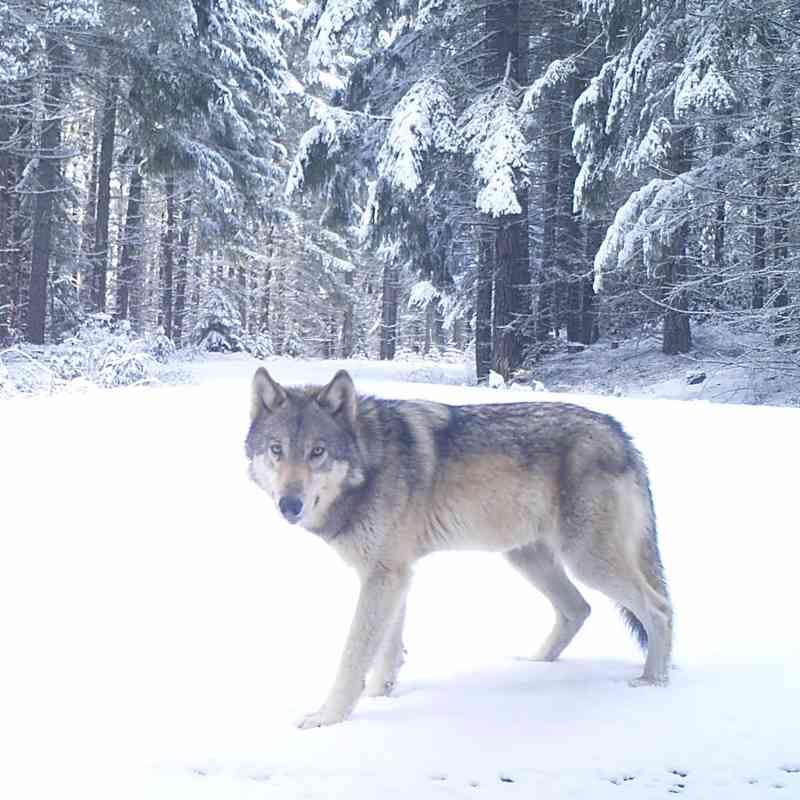The Washington Post reported today that the Trump administration has received an application from an oilfield services company to conduct 3-dimensional seismic exploration across the entire 1.6 million-acre coastal plain in the Arctic National Wildlife Refuge, beginning as soon as December 10 of this year. The operation would occur during polar bear denning season, threatening to disturb the small population of imperiled Southern Beaufort Sea polar bears as they birth and rear their cubs on the species’ most important onshore denning habitat in the United States.
According to the “Marsh Creek 3D Plan of Operations,” SAExploration Inc. (SAE) has requested permits from the Bureau of Land Management to conduct the seismic survey on behalf of its partners, Arctic Slope Regional Corporation (ASRC) and Kaktovik Inupiat Corporation (KIC). The operation plan’s slipshod description of proposed activities and potential environmental effects is alarmingly inadequate given the stakes, and exposes SAE for its failure to understand the severe risks posed by seismic exploration to wildlife and their habitat.
Defenders of Wildlife President and CEO Jamie Rappaport Clark offered the following statement:
“This appalling proposal exemplifies all that is wrong about oil drilling in the Arctic refuge: rushed, reckless and utterly irrational. The slipshod document, rife with inaccuracies and missing information, is also a stark reminder that oil exploration and drilling in the Arctic refuge is incredibly dangerous to wildlife and habitat.
We will immediately litigate any attempt by the Trump administration to cut corners to authorize seismic exploration in the Arctic refuge. We will fight to protect the Arctic refuge and the wildlife that depend on it with every tool at our disposal, including the full weight of the law.”
Background
The Risks of Seismic Testing
- The large operation envisioned by SAE entails crews of people and vehicles driving across the tundra dragging sled camps, building temporary infrastructure and creating extensive noise, vibration and disturbance. The impacts to wildlife and wilderness values would be severe.
- Oil exploration would occur during polar bear denning season, in critical habitat for the threatened Southern Beaufort Sea polar bear, which encompasses 77 percent of the coastal plain. These bears already number as few as 900 individuals. Seismic testing could frighten mother bears from their dens, leaving cubs to perish and contributing further to species decline.
- Authorizing and permitting seismic exploration entails a separate planning process outside the current planning for leasing, and usually the Bureau of Land Management (BLM) will already have created a programmatic or management plan to which it tiers seismic environmental assessments. No such BLM plan exists in this case. The hurried timeline for exploration suggests the administration will only prepare an environmental assessment (EA), as there wouldn’t likely be enough time to develop a full environmental impact statement (EIS).
The Drilling Threat
- Authorization for drilling on the coastal plain was inserted into the tax reform reconciliation bill last year, allowing it to bypass a filibuster in the Senate. This high-profile, divisive provision had nothing to do with tax reform, but allowed Congress to circumvent full and fair debate when enacting it in December.
- The Trump administration issued a Notice of Intent to initiate scoping for an environmental impact statement to lease the coastal plain of the Arctic National Wildlife Refuge for oil and gas drilling in April. The 60-day public comment period for the proposal ends on June 19, 2018.
Why We’re Fighting for the Arctic Refuge
- The Arctic National Wildlife Refuge comprises approximately 19.6 million acres of public lands and water in northeastern Alaska.
- The coastal plain, where exploration and drilling would occur, is the biological heart of the refuge. Oil development would irreparably damage the wilderness and habitat values of this vital landscape. Pipelines, drill rigs, buildings and other infrastructure accompanied by inevitable oil spills, leaks, and noise from industrial development would threaten iconic wildlife and imperil sensitive species that call the refuge home.
- The coastal plain is the principal calving ground of the spectacular Porcupine caribou herd, which numbers nearly 200,000 animals. The indigenous Gwich’in people of northeastern Alaska and Canada have depended on the herd for cultural and physical sustenance for millenia. The Gwich’in revere the coastal plain as “the sacred place where life begins” due to its importance to the caribou and are strongly opposed to oil drilling.
- The Arctic refuge provides vital nesting habitat for hundreds of species of migratory birds from all 50 states and six continents; the most important onshore denning habitat for threatened polar bears in the United States; spawning streams for Dolly Varden and other valued fish species; and room to roam for caribou, wolves, muskoxen, Dall sheep, arctic foxes and many other wildlife species.
- Most of the Arctic refuge’s coastal plain is designated critical habitat for federally protected polar bears. Mother polar bears with cubs are increasingly denning in this area as annual sea ice melts more quickly due to a warming climate.
- President Dwight D. Eisenhower first reserved much of the refuge as the Arctic National Wildlife Range in 1960. Congress later affirmed and expanded the refuge in the Alaska National Interest Lands Conservation Act in 1980. Now about the size of South Carolina, the Arctic refuge preserves one of the largest intact ecosystems in the world. Approximately 40 percent of the refuge, mostly in the Brooks Range, is designated as wilderness to help permanently protect this treasured landscape.
- Industrializing America’s greatest national wildlife refuge is extremely controversial. According to polling by Yale University, two out of three Americans support protecting the Arctic refuge.
Defenders of Wildlife is dedicated to the protection of all native animals and plants in their natural communities. With over 1.8 million members and activists, Defenders of Wildlife is a leading advocate for innovative solutions to safeguard our wildlife heritage for generations to come. For more information, visit Newsroom.Defenders.org and follow us on Twitter @DefendersNews.
Defenders of Wildlife is celebrating 75 years of protecting all native animals and plants in their natural communities. With a nationwide network of nearly 2.2 million members and activists, Defenders of Wildlife is a leading advocate for innovative solutions to safeguard our wildlife heritage for generations to come. For more information, visit defenders.org/newsroom and follow us on Twitter @Defenders.


